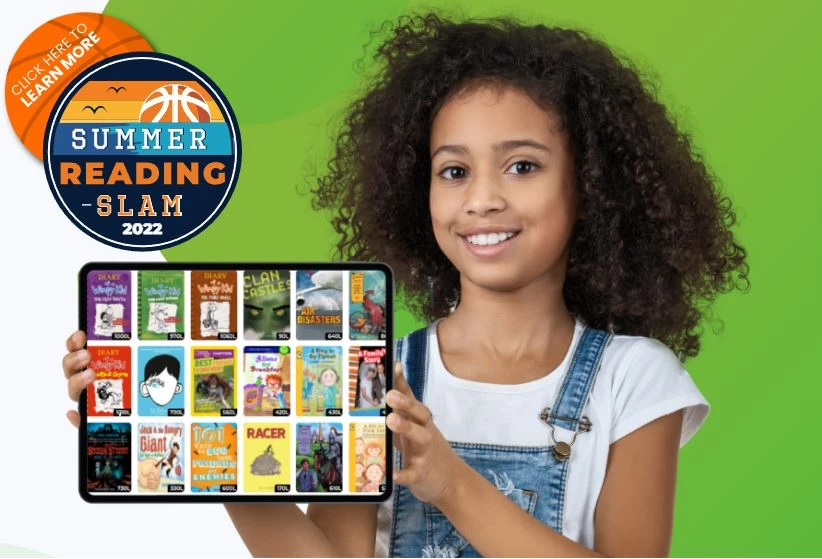

Young readers of every age are undeniably influenced by the adults in their lives: whether you’re a parent, teacher, uncle, mentor or even an older sibling, you have the opportunity – and responsibility – to help the kids in your midst fall in love with books. By making time, providing choice, reading to kids and talking about books, you could play a critical role in developing young readers – immediately – and help nurture them as lifelong readers.
Here are 4 ways adults can influence the reading lives of kids:
-
MAKE TIME
At School: Leaders and teachers need to make time in the day for reading. Period. Full stop. We cannot assume kids will read at home (see next paragraph). We need to make the time and use that time well. We can’t simply say “Read,” and leave it there – there is a right way to do it that ensures students have access to great books and that actual reading is taking place. But first and foremost, just as lunch is a non-negotiable guaranteed to kids everyday, the same should be the case for reading. There is evidence that shows the benefits of dedicating at least 30 minutes to reading every day. The more kids read, the better they get at reading, the more they enjoy it, and the better they perform in school in all academic areas.
At Home: My wife and I don’t get everything right. Not even close. Case in point, just last week I watched my son eat fistfuls of Frosted Flakes out of the box while watching really bad TV…for 2 hours. Like most parents, we screw up in little and big ways all the time, it’s all part of the journey. But one thing we have touched on that works, and that we try to come back to as often as we can, is “family reading.” When our kids were in kindergarten and 4th grade (about 4 years ago), we started making Family Reading a thing. We don’t do it every night, but when we do, it’s great. Everyone gets their book, finds a comfortable place, and reads. The best sessions can last for over an hour, with bedtimes being delayed and showers skipped as we each delve into our own worlds. -
PROVIDE CHOICE
At School: Imagine if you went to a restaurant and you were told what to eat. Every time. It would make going out a lot less interesting, right? For me, the moments between sitting down and ordering are my favorite. I love to peruse the menu, revisit old favorites and sometimes embark on new territory. It’s the same for books. I love walking the aisles of a library or used book store with my head cocked sideways as I decide where to dabble next. For too many kids, however, going to school is like going to a restaurant with no menus. Most schools have a set reading curriculum with pre-determined titles that all kids are expected to read. That makes sense. Unfortunately, what happens in too many classrooms – in too many schools – is that this required reading is the only thing kids read.
Just as we periodically expose kids to new foods to broaden their palates, so too must we help them explore books across a wide range of interests and genres. This could help them pursue their own interests (should I be worried that my son just took out 4 non-fiction books about rats?), while opening the doorway wide for discovering new ones. Schools need robust classroom and school libraries – curated by kids and the adults who know best – where all kids could have access to options they may not have as part of their mandated reading diet.
At Home: Choice should be promoted in the home as well, and from an early age. Even babies and toddlers could choose between two board books based on color, design or topic, just as a teenager can. The choice, of course, is not “to read or not to read,” it’s about what to read. It’s a little bit like the vegetable choice many parents provide their kids when they ask “you could have carrots, or broccoli.” When reading time comes around in our house and one of our kids is resistant we remind them, “you could read your novel or you could read a magazine, or anything else.” Beyond what to read, it is often helpful to provide choice on where to read (couch? bed? chair? floor?), when to read (right before dinner, right after, right before bed?) and how to read (tablet?book?). For kids who spend the majority of their school days in environments where choice is limited, these types of small maneuvers go a long way in helping them develop healthy and productive habits. -
READ TO THEM
In School: Keep reading to kids, no matter what age they are. I’ve talked with 4th and 5th grade teachers who think their students are too old to be read to, and I’ve seen high school teachers and college professors utilize picture books as entry points to deeper conversations. Our kids are not too old to be read to. WE are not too old to be read to. Don’t believe me? Maybe Maya Angelou can remind you of the the power of the spoken word. There is no such thing as being too old to benefit from a read aloud.
At Home: Many of us started reading to our children in the womb, and then gleefully through infancy and toddlerhood. In many households, reading to kids trails off as kids begin to gain competence and independence as readers themselves. But here’s the thing: Kids can understand what they hear far ahead of what they are able to read on their own. For a first grade reader, words like “toppled” and “fastened” (both words used in the Don Freeman classic Corduroy) are better understood when heard than when read. So while a child might not be able to read that book until they are in 3rd grade, they would benefit greatly from hearing it first. -
TALK ABOUT BOOKS
Have we said “thank you” to Oprah lately? The woman single-handedly popularized talking about books the way she popularized the whole “you and you and you get a car” thing. So “thank you, Oprah.” Seriously.
Several years ago, a shift occurred and people started referring to English class as English Language Arts, or ELA. Those of us who went through teacher training programs at that time – and still today – were inundated with the idea that ELA is more than reading and writing; it encompasses speaking and listening, too. Kids need a lot of opportunity to practice speaking and listening, not only to improve their vocabulary, but to help them build and share their understanding of what they are reading.
In School: There is a ton that could be done in classrooms to increase conversation about books. In another blog post, I suggested principals start asking kids and adults “What are you reading?” Doing this provides a connection and a window into an individual’s thinking, but also shows that reading is a top priority in the school. Teachers have the best opportunity to get kids chatting by instituting Literature Circles. There are great strategies and structures for how to do this well – see these video clips for how this could be done in both elementary and high school. Whatever the age, the act of talking about books with peers builds comprehension and enhances the joy of reading.
At Home: A recent article in the New York Times describes how teenagers have a near-allergic reaction to the question “How was school today?” I am guilty of asking that one. Sorry, son. One pivot away from that knee-jerk question – for both younger kids and older kids – is “what are you reading right now?” Several follow ups could ensue: Do you like it? What’s the best part? Should I read it? Is it funny/scary/weird? Can you tell me about your favorite part? Another fun way to get kids talking about books is to start a kid’s book club at home. Cookies and milk make a fine replacement for the wine and cheese adults sometimes serve at their book clubs, but the shared joy of experiencing a virtual world together remains the same.
So what are you waiting for? Take out your tablet, magazine, newspaper or book and get reading to,with, and next to your kids or students! Let’s get our kids reading a lot, everyday. We also know from research – and from our own lived experiences – that kids who read for at least 30 minutes a day grow Lexile levels faster than their counterparts who read less, and they perform better in school.
When it comes to reading, there really is no such thing as “too much.” Let’s make great books available to our kids, no matter where we see them, and let’s remember that we are the ones who could help them develop their first crush on books, and eventually fall in love for a lifetime.
Mitch Center has spent the past 20 years working in a variety of roles and capacities in the field of education, in both district and charter schools. He began his career in the field as an AmeriCorps Volunteer in 1996, and worked as a teacher, camp director, VP, principal and coach before joining Newark Public Schools as Assistant Superintendent in 2012. In this role, he coached and supported 14 school leaders who lead K-8 schools across the city of Newark, New Jersey. As a father of school age kids, and as someone who has visited hundreds of classrooms and schools, he believes deeply that all great schools have one thing in common: outstanding adults who make magic for the kids they serve.
Posted on 11.Nov.16 in Literacy Strategies




